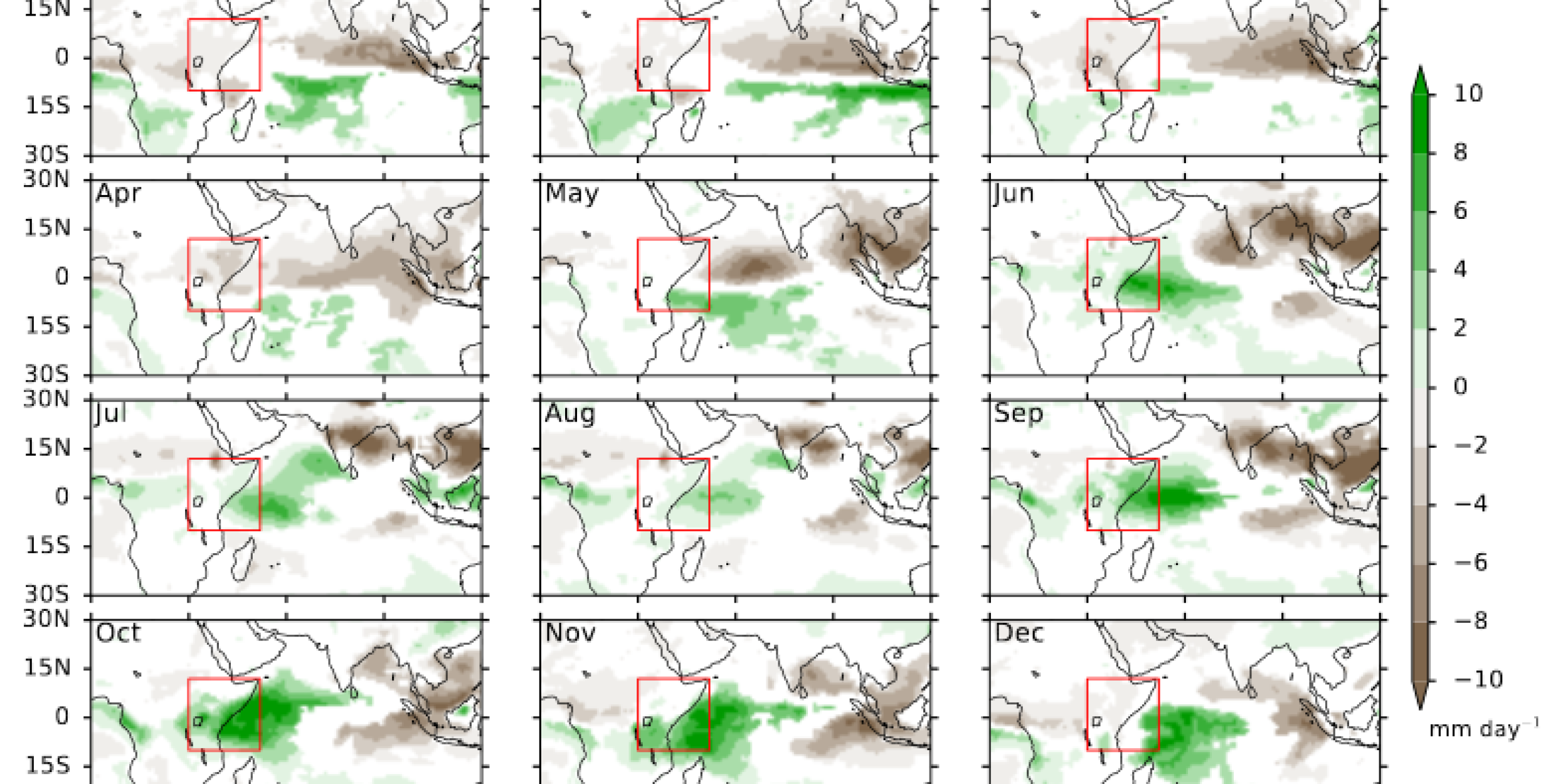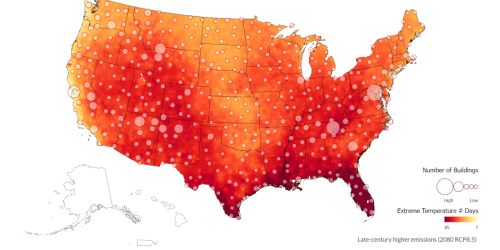They overestimate the short rains and underestimate the long rains, and this inaccuracy raises questions about using coupled model predictions to inform important development decisions in Africa. While hypotheses abound regarding the cause of these model biases, no clear answer has been agreed upon.
A new CVP-supported paper accepted for publication in the Journal of Climate applies the moist static energy (MSE) and convective instability (CI) framework to the problem to understand the bias in coupled models – running both types of models to compare their representation of the annual cycle of rain and determine which processes may be causing the biases. Authors Yang et al. conclude that the SST bias over the western Indian Ocean modulates the near surface MSE bias in historical-AMIP runs. They also find that “insufficient ocean dynamical cooling and latent flux both are responsible for the development of the warm SST bias of historical−AMIP in MRI-CGCM3, while insufficient short wave radiation and excess latent heat flux mainly contribute to the cold SST bias.”
More research into the issue needs to be conducted, but “sure as Kilimanjaro rises like Olympus above the Serengeti,” this paper moves the community closer to understanding and resolving these biases.
To access the full paper, visit: http://dx.doi.org/10.1175/JCLI-D-15-0323.1
Climate models bias the rains down in Africa, but there’s something that 100 model runs or more could do











